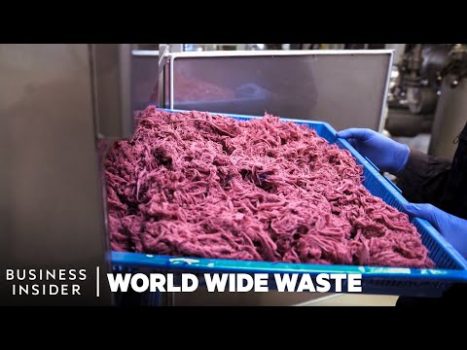How Recycling Machines Make New Clothes From Used Apparel

H&M bets clothing recycling could eventually solve some of the industry’s biggest environmental problems.
But can a fast-fashion company solve the problem it helped create?
The process of recycling machines to transform old garments into new fabrics.
The fashion industry is one of the largest polluters in the world, contributing to greenhouse gas emissions, water pollution, and waste. In fact, according to the Ellen MacArthur Foundation, the fashion industry alone contributes to 10% of global carbon emissions and consumes huge amounts of resources used in the production of clothes.
However, there is hope for a more sustainable fashion industry with the development of recycling machines that can turn used clothing into new garments. These machines are making it possible to create a circular economy for fashion, where garments are recycled repeatedly, preventing waste and reducing the carbon footprint of the fashion industry.
These recycling machines use advanced technology to separate the fibers of old garments and transform them into new textiles. The process starts with sorting the clothing by fabric type and separating out any non-recyclable materials, such as zippers or buttons. The garments are then shredded into small pieces using industrial shredders, and the resulting fibers are sorted and cleaned.
Next, the fibers are spun into new yarns or fabrics using specialized machines. This process enables the creation of new fabrics with a smaller environmental impact, as it reduces the need for new raw materials and eliminates the waste created from manufacturing new fabrics.
One example of a company making headway in recycling technology is Renewcell. Their recycling machine, the Cirkulose, produces a new fiber called Circulose, created from old cotton garments that are dissolved and converted into new fibers. This fiber can be used to make high-quality fabrics that are both durable and sustainable.
Another innovative company is Evrnu, who has developed a technology to recycle cotton that is blended with synthetic fibers. Their recycling machine can break down the blended fibers and spin them into a new yarn called NuCycl. This process allows for the creation of new garments while reducing waste and decreasing the need for new raw materials.
Recycling machines have the potential to revolutionize the fashion industry by enabling a more sustainable and circular approach to production. These machines can help reduce the amount of clothing waste that ends up in landfills or incinerators and prevent the release of carbon emissions associated with making new fabrics.
As consumers, we can help support this shift towards a more sustainable fashion industry by shopping from sustainable brands that prioritize recycled fabrics and by investing in quality garments that last. We can also support policies that incentivize and regulate the use of recycling machines in the fashion industry.
In conclusion, recycling machines are a promising solution to the sustainability challenges facing the fashion industry. By transforming old garments into new fabrics, they can help reduce waste, decrease greenhouse gas emissions, and promote a more circular approach to production. Through investment in these technologies, we can work towards building a more sustainable and conscious future for the fashion industry.









This Turkish Ice Cream Doesn’t Melt
8 Fall FASHION TRENDS To Actually Wear in 2019!
THE UNSTOPPABLE SILENT 80 SOLAR POWERED CATAMARAN!
He’s Eaten Only Mac & Cheese for the Past 17 Years, Here’s Why
Colonial Army Rations: Beer Every Day! – Spruce Beer In Early America